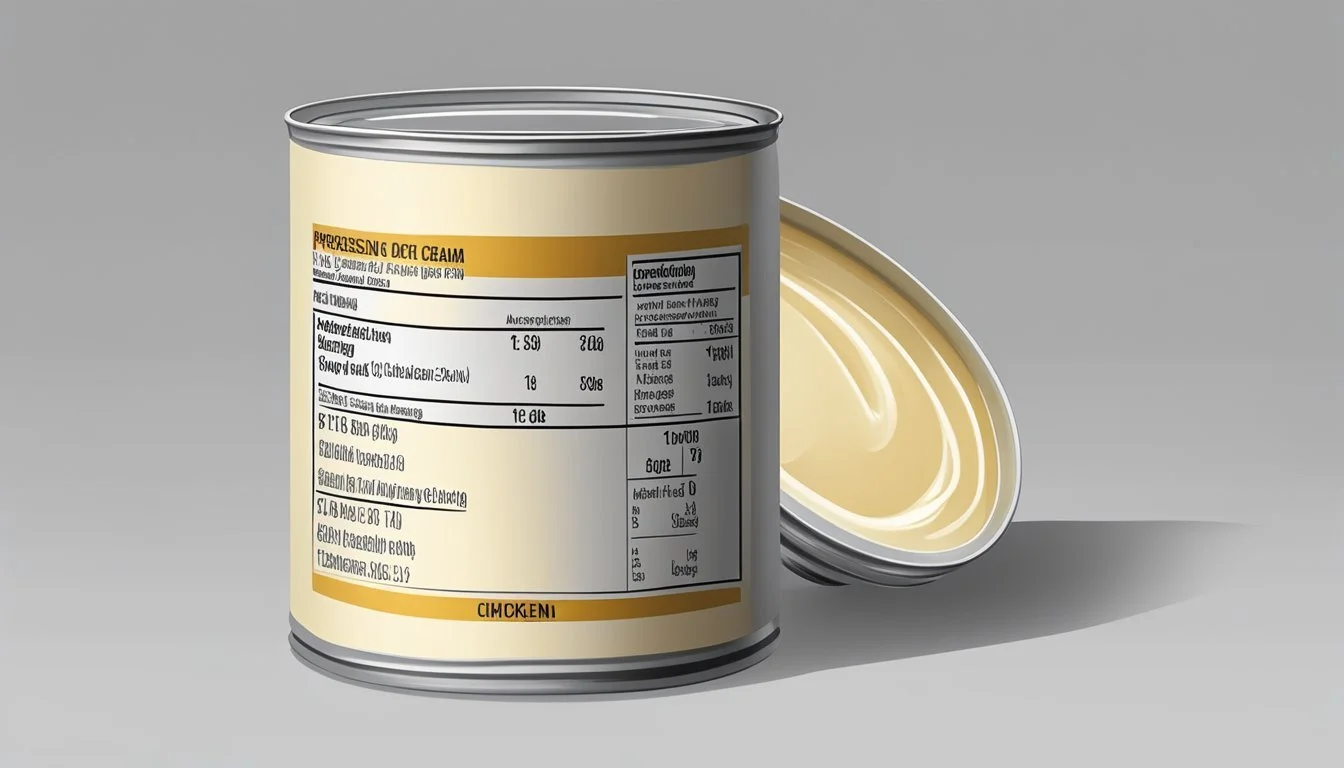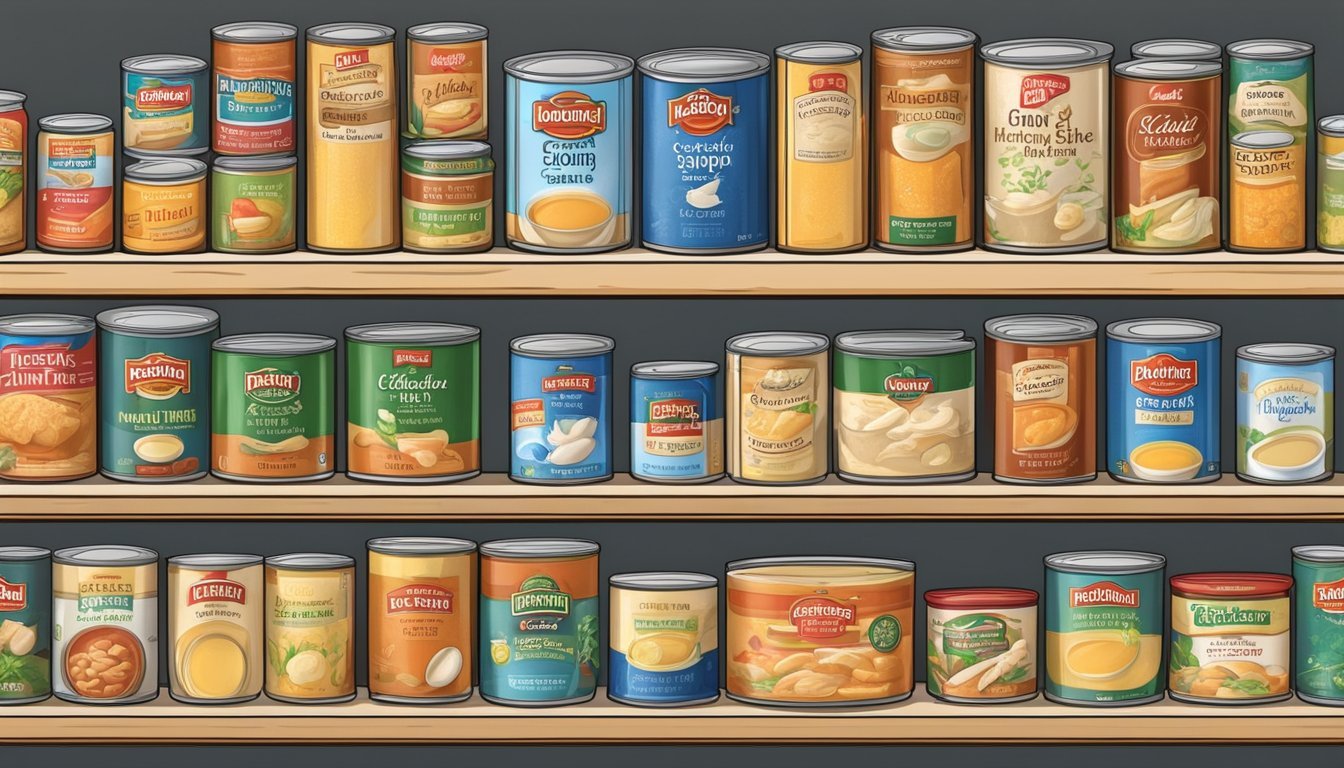Does Canned Cream of Chicken Soup Expire?
Shelf Life and Storage Tips
Canned cream of chicken soup is a convenient pantry staple, but many consumers wonder about its expiration and safety. The shelf life of this canned soup hinges on various factors, including storage conditions and the production date. Generally, an unopened can of cream of chicken soup can last for up to two years when stored properly in a cool, dry place.
Even beyond the expiration date, the soup can often remain safe to consume, provided the can is undamaged and has been stored correctly. Consumers should always check for signs of spoilage, such as bulging cans or off smells, before deciding to use expired soup. For best quality, it is advisable to use the soup as soon as possible after the expiration date.
Proper storage plays a crucial role in maximizing the shelf life and maintaining the quality of canned cream of chicken soup. Keeping the cans in a cool, dry environment aids in preserving their contents. By following these guidelines, individuals can continue to enjoy their favorite comfort food safely and without significant loss of quality.
Understanding Expiration Dates
Expiration dates on canned cream of chicken soup can be confusing. This section explains how to read and understand these dates and provides insight into what manufacturers mean by them.
Deciphering Date Labels
Different terms on cans are used to indicate quality and safety. Common labels include:
Expiration Date: Indicates when the product should not be consumed.
Best by/Best Before: Suggests the date by which the product has the best flavor or quality.
Sell-By Date: Helps stores manage inventory.
Best if Used By/Best When Used By: Similar to "best by," implying optimal quality.
Each term serves a different purpose. Consumers should focus on expiration dates for safety and best by dates for quality.
Manufacturers Estimate of Peak Quality
Manufacturers provide these dates to ensure consumers enjoy the product at its best.
Best Quality: Typically, canned cream of chicken soup maintains quality for about 3 to 5 years if stored properly.
Safety Date: Expiry dates are more about safety. Using the product past this date increases risks.
Manufacturers base their estimates on factors like ingredients, processing, and storage conditions. Proper storage in a cool, dry place can help extend the shelf life. Always check the can for any signs of damage or spoilage before consumption.
Assessing Canned Soup Quality
When evaluating the quality of canned cream of chicken soup, consider inspecting the can's exterior and identifying potential signs of spoilage. These steps ensure the soup remains safe for consumption.
Visual Inspection of Cans
Check for dents, rust, or bulging on the can's surface. Dents may compromise the can's integrity, while rust can indicate prolonged poor storage conditions. Bulging cans are a critical warning sign, potentially signaling bacterial growth or chemical reactions inside the can.
Examine the can's seams and seals. Properly sealed cans should have smooth, tight seams. If the seams appear loose or damaged, it's best to avoid using that can. Label readability is also crucial; ensure the expiration date and storage instructions are clear.
Identifying Signs of Spoilage
Look for discoloration or separation in the soup once opened. Cream of chicken soup should have a consistent color and texture. Any unusual colors or separation of liquids from solids can indicate spoilage.
Smell the soup carefully. A sour or off odor often means the soup is no longer safe to eat.
Taste a small amount if the visual and smell tests are passed, but only if confident it's safe. Any off-taste indicates spoilage. Always prioritize safety by erring on caution if uncertain.
Proper Storage Conditions
To maximize the shelf life and maintain the freshness of canned cream of chicken soup, it is critical to store the soup properly, whether the cans are opened or unopened.
Storage of Unopened Cans
Unopened cans of cream of chicken soup should be stored in a cool, dry place. Optimal conditions include:
Room temperatures between 50-70°F (10-21°C)
Low humidity levels Keeping cans in a pantry or cupboard, away from direct sunlight, heat, and moisture, will ensure the soup stays at peak quality.
An unopened can, when stored correctly, can last between 2-5 years. It is essential to ensure that the cans remain sealed and undamaged to prevent contamination or spoilage. Airtight seals and sturdy packaging help in preventing the entry of bacteria and oxygen, prolonging the shelf life.
Storing Opened Soups
Once a can of cream of chicken soup is opened, it must be stored in the refrigerator to maintain its freshness and safety. Transfer the contents to a sealed, airtight container.
Opened soup should be kept at temperatures below 40°F (4°C) and used within 3-4 days to maintain peak quality. If you wish to store the soup for longer, consider freezing it. Placing the soup in freezer-safe containers can extend its usability. Labeling with the date ensures that you track how long it has been stored.
Safety Concerns with Expired Soup
Expired cream of chicken soup poses several health risks, including bacterial growth and potential foodborne illnesses if consumed beyond its shelf life. Recognizing the signs of spoilage and understanding these risks are crucial for safe consumption.
Bacterial Growth and Foodborne Illness
Canned soup, even when stored properly, can be susceptible to bacterial growth after its expiration date. Harmful bacteria such as Clostridium botulinum and Salmonella may develop if the soup has been compromised.
Unopened cans are less likely to pose immediate dangers but can still degrade in quality, leading to potential risks. It's important to check for signs of spoilage such as a bulging can, off-smell, or unusual color.
Consuming spoiled soup can lead to serious foodborne illnesses. Symptoms can range from mild stomach discomfort to severe food poisoning requiring medical attention. Heating the soup to an internal temperature of 165°F (74°C) can kill some harmful bacteria, but does not eliminate the risk entirely.
Health Risks of Consuming Expired Soup
Expired soup can taste bad and potentially cause health issues. Spoiled soup may have a sour or rancid odor, indicating the presence of harmful bacteria or fungi. These contaminants can lead to vomiting, diarrhea, and other symptoms of food poisoning.
Prolonged exposure to expired canned goods can increase the risk of consuming toxins produced by bacterial growth. These toxins are not always detectable by smell or taste, making them particularly dangerous. Botulism, a rare but serious illness, can occur from improperly stored or expired canned foods.
Storing canned soup in a cool, dry place helps maintain its quality, but care must be taken to monitor expiration dates and discard any cans showing signs of spoilage to avoid health risks.
Canned Soup as a Versatile Ingredient
Canned cream of chicken soup is a convenient and adaptable ingredient. It can enhance the flavor and consistency of various dishes, offering an easy solution for home cooks looking to save time without compromising taste.
Culinary Uses of Cream of Chicken Soup
Cream of chicken soup is often utilized in casseroles. Its creamy texture and rich flavor make it a perfect binder for ingredients, creating cohesive and flavorful dishes. Classic recipes include chicken and rice casserole or green bean casserole.
In gravies, cream of chicken soup can be a base for a quick and delicious sauce. Mixing it with pan drippings and seasonings results in a savory gravy ideal for mashed potatoes or roasted meats.
As a foundation for soups, cream of chicken soup simplifies the preparation. Combining it with broth, vegetables, and cooked chicken creates hearty soups like chicken noodle or vegetable chicken chowder.
Utilizing cream of chicken soup in various dishes adds depth and richness, making it a staple in many kitchens.
Nutritional Considerations
Canned cream of chicken soup often features in various recipes, providing ease of use and shelf stability. It's important to understand its nutritional content and the impact of preservatives and sodium levels.
Nutritional Content of Canned Soup
Canned cream of chicken soup can be high in calories and fat, especially saturated fats. A typical serving size of about half a cup may contain around 90-120 calories and 6-8 grams of fat.
Nutritional content often includes proteins, essential for body repair and growth. Generally, a serving has about 2-3 grams of protein. Additionally, vitamins like B-vitamins and minerals such as calcium and iron are present but in smaller amounts.
Some brands fortify their soups, boosting the nutritional value with extra vitamins and minerals. Always check the label to understand each specific product's nutritional content better, and opt for those with higher nutritional value.
Preservatives and Sodium Levels
Preservatives in canned cream of chicken soup help extend its shelf life. Common preservatives include salt and citric acid. While these ingredients prevent spoilage and maintain flavor, they contribute to the high sodium content often present in these products.
High sodium levels can be a concern for those watching their salt intake. A single serving of canned cream of chicken soup may contain around 700-1000 mg of sodium, nearly half of the recommended daily limit for adults.
Consumers should look for low-sodium options or rinse the soup to reduce sodium content. Reading labels thoroughly is crucial to making more health-conscious choices when consuming canned foods like cream of chicken soup.
Maximizing Shelf Life
Proper storage of canned cream of chicken soup is essential to extending its shelf life and maintaining its quality. Key factors include temperature control, storage conditions, and knowing when to donate to food banks.
Best Practices for Expiry and Consumption
Storage Conditions: Store unopened cans in a cool, dry place. Avoid locations exposed to heat, sunlight, or fluctuating temperatures.
Temperature: Optimal temperature for storing canned goods is between 50°F (10°C) and 70°F (21°C). Higher temperatures can affect the quality.
Sealed: Always check that cans are sealed and undamaged before storing them. Any bulges or leaks indicate possible contamination.
Label Check: Verify the "use by" or "best before" dates. While canned goods can last beyond these dates, using them soon after ensures optimal freshness and quality.
When to Donate to Food Banks
Food Bank Policies: Many food banks accept canned goods that are past their "best before" dates if they are still in good condition. Check the specific guidelines of the food bank.
Identifying Freshness: Donate canned cream of chicken soup that is close to its expiration to ensure it is used while still fresh.
Condition: Only donate cans that are sealed, undamaged, and free from rust. Damaged cans can compromise the quality and safety of the food.
Timing: Aim to donate a few months before the expiration date to allow enough time for distribution and consumption by those in need. Properly stored canned soup can maintain quality for years, but fresh donations are always preferred.









